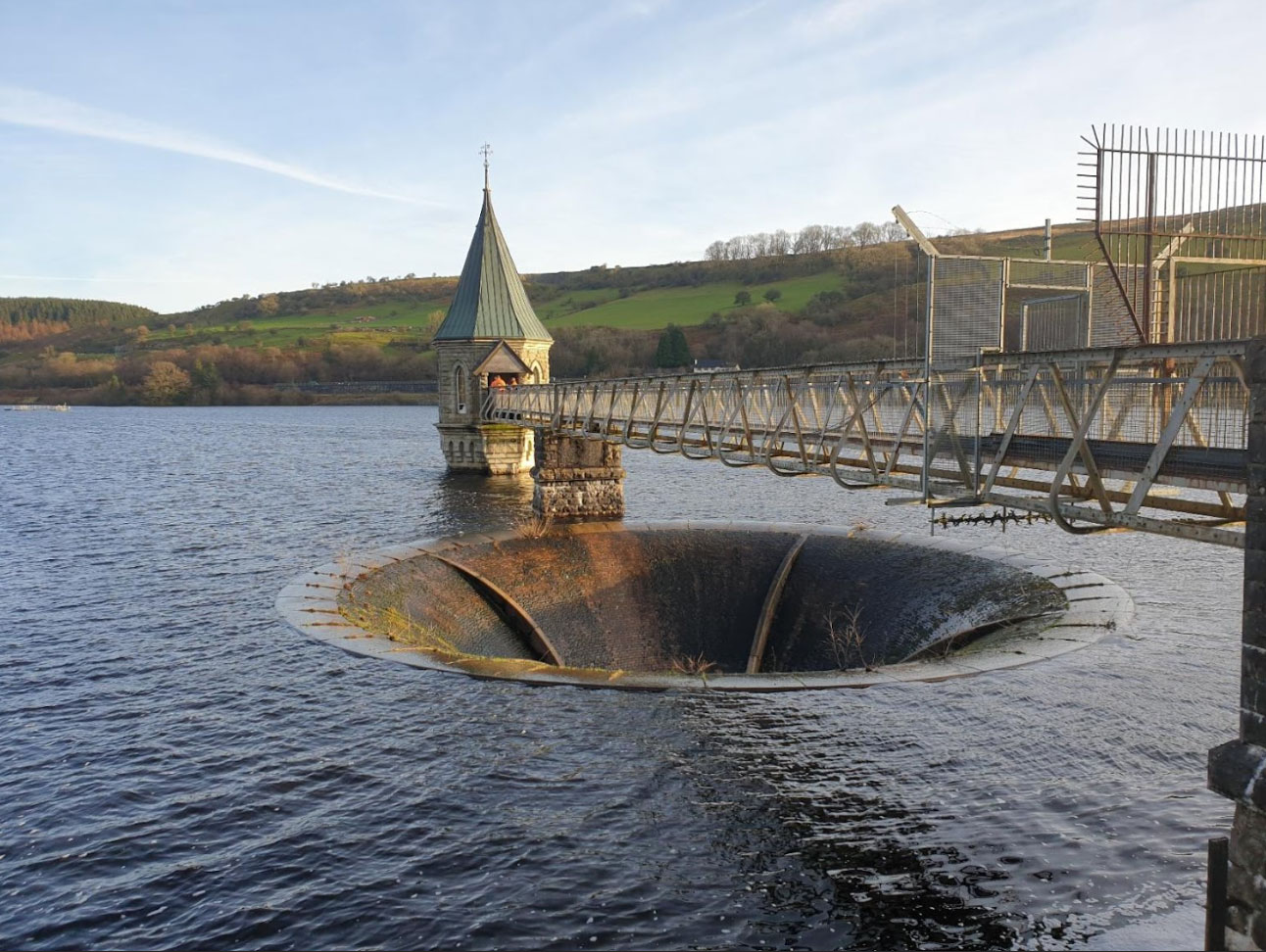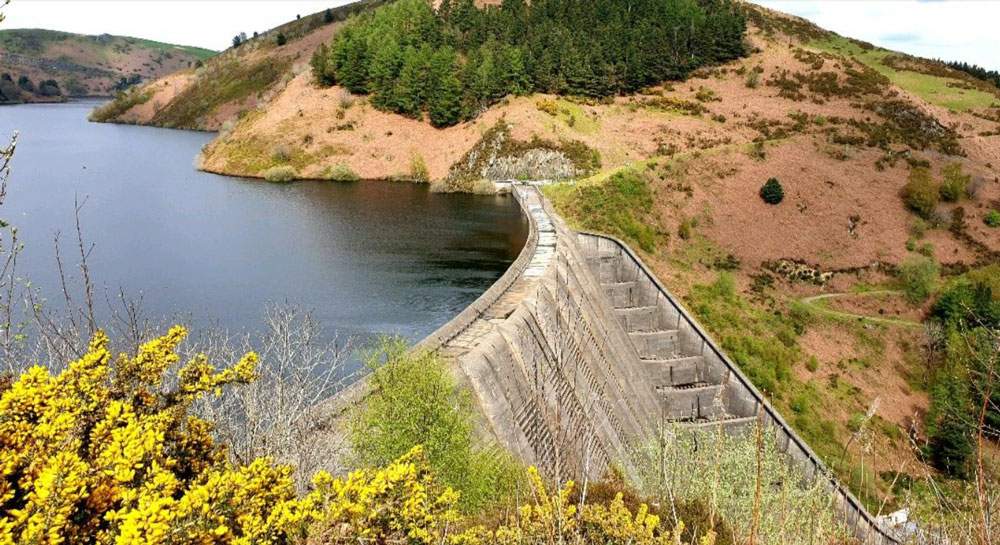Blackhall News
British heritage and our role in its Preservation

We explore the importance of British heritage, and Blackhall Engineering’s role in itspreservation.
Maintaining British heritage
 Maintaining the contained heritage of the UK is an activity that discretely happens whilst we carry on with the daily hustle and bustle. Like the flow of water in our inland waterways or its marginal level fluctuations in our reservoirs and lakes, it’s something we tend to take for granted, only becoming alarmingly aware of it in times of absence or copiousness. Even then the work that is carried out to bring a return to normality tends to go unnoticed. In truth, it is companies like Blackhall Engineering, who work ceaselessly in the background to maintain the
quilibrium, that allow us to marvel at the vista and live the lives that we do; for without them, our built history and landscapes would literally be washed away!
Maintaining the contained heritage of the UK is an activity that discretely happens whilst we carry on with the daily hustle and bustle. Like the flow of water in our inland waterways or its marginal level fluctuations in our reservoirs and lakes, it’s something we tend to take for granted, only becoming alarmingly aware of it in times of absence or copiousness. Even then the work that is carried out to bring a return to normality tends to go unnoticed. In truth, it is companies like Blackhall Engineering, who work ceaselessly in the background to maintain the
quilibrium, that allow us to marvel at the vista and live the lives that we do; for without them, our built history and landscapes would literally be washed away!
Dams and reservoirs
Throughout this land, with its ever-burgeoning population, a network of reservoirs has evolved, aided by embankments of dams and accompanying pipework systems, to control the water that keeps the people hydrated, clean and the wheels of industry turning. A lot of these edifices date back to the time of Victoria and the great age of the engineer, causing us to stand back in awe and utter things like ‘we stand on the shoulders of giants.’. As representative pieces of civic architecture, they are monuments to the Rivalist Gothic Movement that so infused the culture of the 19th century in Britain. On the grand scale examples include Manchester Town Hall (1868–1877) and St. Pancras railway station London (1863–1868); the latter of which was saved from the wrecking ball in the 1960s when it was realised how important it was to preserve these representations of our urban landscape. As with most trends the style, and to some extent the ethos, soon permeate all forms, so it’s no surprise that we see modest pumping houses and associated buildings humbly aspiring to the same level of grandeur. Decades have passed and they have served their purpose exceptionally well, becoming so much an inherent part of the landscape that they appear to have risen organically; appreciated by the many to such an extent (like St. Pancras) that they have had preservation orders placed upon them. But tempus fugit, accompanied by her ever-present collaborator – decay. From the outside no discernible difference can be detected, albeit for a bit of blackening here, a slight crumbling of stonework there and occasionally a structural drift away from the perpendicular; but unfortunately, the same cannot be said for the internal working components. As perfectly formed as they were at their date of installation, the universal law of entropy begins to work its invidious process on human endeavour. Gears start to blur, bearings begin to seize, drive-shafts get out of kilter and valves fail to close (or open). Thus, remedial intervention is never far away!
Decades have passed and they have served their purpose exceptionally well, becoming so much an inherent part of the landscape that they appear to have risen organically; appreciated by the many to such an extent (like St. Pancras) that they have had preservation orders placed upon them. But tempus fugit, accompanied by her ever-present collaborator – decay. From the outside no discernible difference can be detected, albeit for a bit of blackening here, a slight crumbling of stonework there and occasionally a structural drift away from the perpendicular; but unfortunately, the same cannot be said for the internal working components. As perfectly formed as they were at their date of installation, the universal law of entropy begins to work its invidious process on human endeavour. Gears start to blur, bearings begin to seize, drive-shafts get out of kilter and valves fail to close (or open). Thus, remedial intervention is never far away!
More about valves
The valves in these structures are crucial components used in scour and drawdown operations, and as we have indicated, their failure could be catastrophic. According to DEFRA, ‘In England, 1.1 million properties are at risk of flooding from the structural failure of large raised reservoirs and their associated dams. The average age of these structures is 120 years and the possibility of a catastrophic failure may be expected to increase with age. A key factor in avoiding and minimising the impact of such a catastrophic failure is the ability to draw a reservoir down in the event of an emergency. This will reduce the load on the dam structure, reduce the likelihood of failure and, in the very worst outcome, minimise the impacts downstream in the event of failure. Their Guide to drawdown capacity for reservoir safety and emergency planning further states ‘It is a legal requirement under the Reservoirs Act that inspecting engineers should review the efficiency of the scour pipe or discharge culvert or other means of lowering the water in ... the reservoir’. As such, it is vitally incumbent upon companies that are contracted to maintain and repair these systems to possess the best trained personnel and utilise the best materials available. And this is where we find ourselves at Blackhall Engineering. A company that is the inheritor of those very same values that were laid down in mid-nineteenth century Britain, we understand the critical nature of valves in the proper operation of dams and reservoirs, and we take responsibility for their repair and refurbishment very seriously.
The year so far
 In just five months of 2023, our team of Valvologists at Blackhall have made remarkable progress, showcasing our commitment to excellence. Dave Richmond, our Service Director, and Howard Wilson, our Engineering Services Manager, have been busy travelling throughout the UK, spending their valuable time in some of the most beautiful Dam & Reservoir locations, carrying out important & comprehensive valve inspections and providing vital consultancy surveys for our Customers. Kash Samra, our Service Development Manager, plays a vital role in efficiently handling valve repair and refurbishment enquiries, ensuring co-ordination and timely completion of each project. With her dedication and expertise, we guarantee exceptional service delivery and customer satisfaction.
In just five months of 2023, our team of Valvologists at Blackhall have made remarkable progress, showcasing our commitment to excellence. Dave Richmond, our Service Director, and Howard Wilson, our Engineering Services Manager, have been busy travelling throughout the UK, spending their valuable time in some of the most beautiful Dam & Reservoir locations, carrying out important & comprehensive valve inspections and providing vital consultancy surveys for our Customers. Kash Samra, our Service Development Manager, plays a vital role in efficiently handling valve repair and refurbishment enquiries, ensuring co-ordination and timely completion of each project. With her dedication and expertise, we guarantee exceptional service delivery and customer satisfaction.
Thomas Meadows, one of our Valvologists and Design Engineer, contributes his expertise in designing intricate & innovative upgrades for these valves, elevating their performance to ensure that our Customers most critical valves are refurbished to the highest industry standards.
Aadil Rafiq, our new Technical Director, brings extensive knowledge and experience to our team of valvologists, helping them to identify design improvements, upgrades & enhancements, all aimed at delivering the ultimate in valve performance & longevity. His valuable insights and guidance optimize both our people & our valves to deliver exceptional results.
 Together, our team of valvologists demonstrate a deep understanding of critical valves and their functionality. Their collective efforts and expertise have enabled us to deliver outstanding results at many of the UK's most prominent heritage sites, including Clywedog Reservoir, Witcombe Reservoir, Cropston and Swithland Reservoirs, Tittesworth Reservoir, Craig Goch Reservoir, and most recently, Blenheim Palace. Utilising the latest technology and equipment, we diagnose, repair, and refurbish critical valves with the highest standards of safety and quality. At Blackhall, we take pride in our dedicated valvologists' contributions, consistently enhancing the performance and longevity of our valves, surpassing expectations, and most importantly, always striving to deliver great results for our Customers.
Together, our team of valvologists demonstrate a deep understanding of critical valves and their functionality. Their collective efforts and expertise have enabled us to deliver outstanding results at many of the UK's most prominent heritage sites, including Clywedog Reservoir, Witcombe Reservoir, Cropston and Swithland Reservoirs, Tittesworth Reservoir, Craig Goch Reservoir, and most recently, Blenheim Palace. Utilising the latest technology and equipment, we diagnose, repair, and refurbish critical valves with the highest standards of safety and quality. At Blackhall, we take pride in our dedicated valvologists' contributions, consistently enhancing the performance and longevity of our valves, surpassing expectations, and most importantly, always striving to deliver great results for our Customers.
Looking to the future
If the core is safe then the external skin will remain. So, by preserving the internal workings of these structures via the safe operation of their valves and associated components, Blackhall Engineering is helping to sustain part of British heritage for future generations to come; satisfying not only our recognition of the pragmatic, but our appreciation of the aesthetic. To find out more about our heritage work, contact us on enquiry@blackhall.co.uk or +44 (0) 1484 407080
